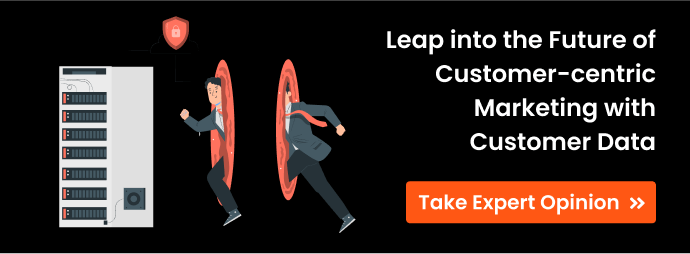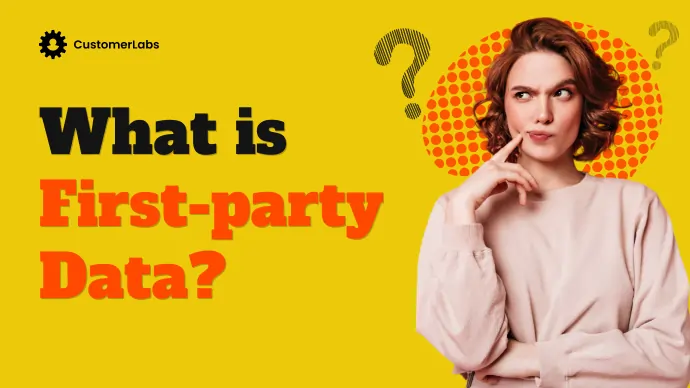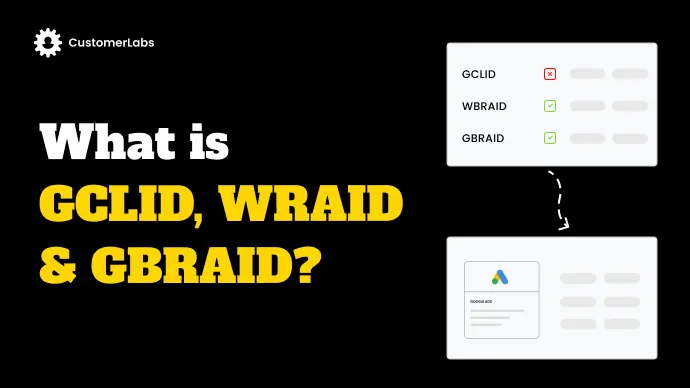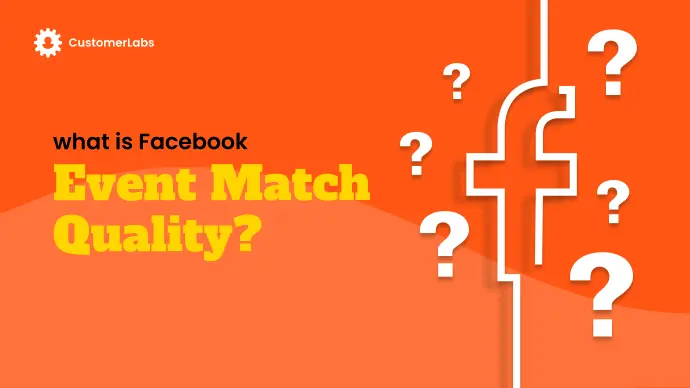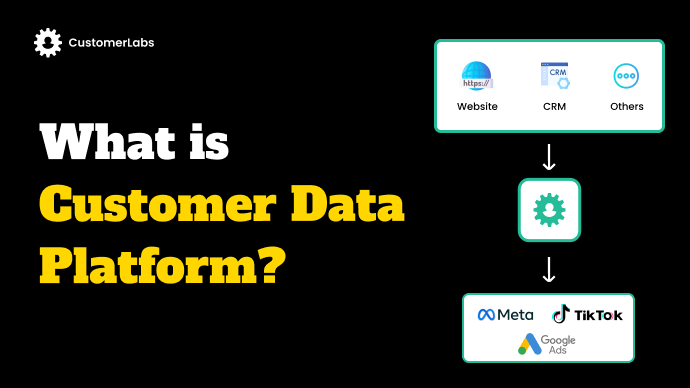
Data is the new oil! Customer data is everywhere – scattered & spread across various platforms. In the current digital world, capturing a vast amount of your customer data without loss is not easy. Especially when data privacy regulations are in place and the third-party cookies have limited access to collect your user data.
It becomes more important than ever for businesses to start collecting first-party data.
This is where a Customer Data Platform steps in. A one-stop solution for all your customer data needs. It helps you collect, unify all your customer data in one place and helps understand the customer behavior and journey.
Once you understand the customer behavior, you can offer personalized experience to your customers. Thus enhancing your CX (customer experience).
Read this blog and find out
- What a CDP is
- How it works
- Why a CDP is a perfect Wingman for your Marketing team
- How to choose the best one for your business
Let us start with the basics first.
What is a Customer Data Platform
A Customer Data Platform is a software that collects customer data across various platforms both online (from website, app, CRM, etc.) & offline (offline store or other data source) and aggregates it to build a unique single customer view (SCV) that can help provide your customers with more
personalized and relevant experiences.
Understanding How a CDP Works:
A Customer Data Platform has a defined process and here’s how it looks:
Data Collection > use identity resolution techniques > segment the audience data > Helps you activate that data through integrations.
Below infographic shows the process in a short and clear way.
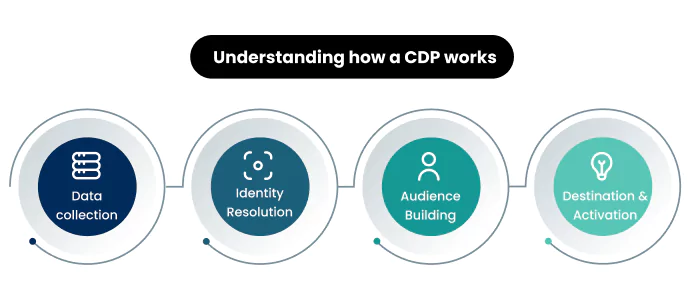
To know how it looks in reality, you can look at the below infographic to understand it in detail.
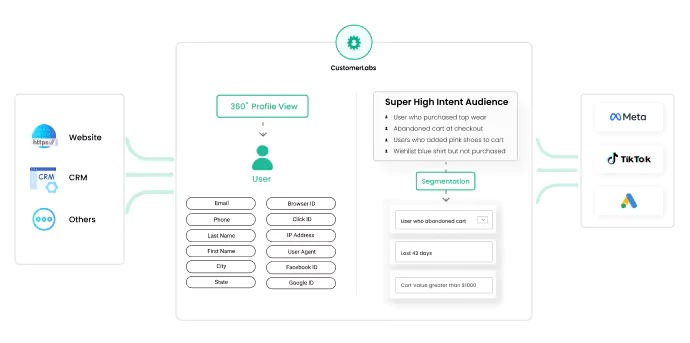
Data Collection:
Customer Data Platform collects data from multiple sources like your website/app/offline store such as touchpoints, behavior, etc. The data collection & storage is done in real-time.
The various parameters of a visitor it collects are name, mobile number, date of birth, email address, location, IP address, browser ID, click ID, User Agent, Facebook click ID, Google click ID, etc.
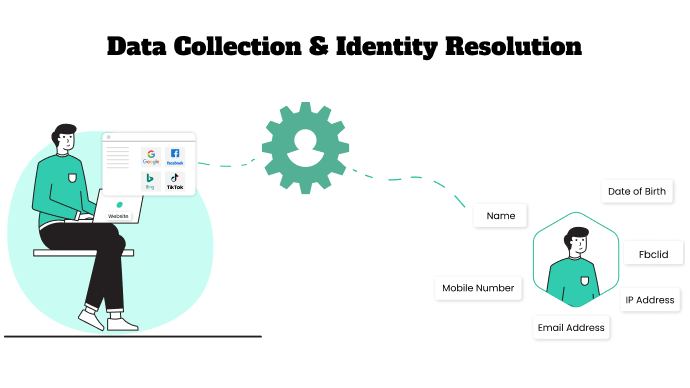
Identity Resolution:
In a CDP, identity resolution entails matching and combining client data according to distinctive identifiers like email addresses, phone numbers, customer IDs, and other data parameters. The objective is to compile all pertinent data points and interactions from various channels and devices into a single, thorough customer profile.

Audience Segmentation:
Customer data platform helps you group your audience into multiple segments based on user behavior, traits, events etc.
If you have one group of customers who spend more than or equal to $500 and another group who spend less than $500.
By using a CDP you can create two separate segments of customers
- Cart value greater than or equal to $500
- Cart value less than $500
Audience segmentation feature offers you the option to customize your audience segments based on your retargeting strategies.
For example, if you have an eCommerce website, you can segment your audience as
- Page viewed
- Specific product viewed multiple times
- Added to wishlist
- Viewed products in a certain price range
- Added to cart but not purchased (cart abandonment)

Audience Activation Across Multiple Destinations :
The segmented audience data can be activated by integrating into any platform using the one-click direct integrations of the CDP.
Some of the destinations a CDP allows you to send this segmented data are Google Analytics, Meta Ads, Google Ads, TikTok, LinkedIn, etc.
When you send the customer behavior data to various ad platforms such as Google Ads or Meta, the ad platforms get trained about your audience data. Once this is done, you can activate them by running retargeting ad campaigns. With this you can ace your omnichannel retargeting efforts.
And when you send the data into an analytics platform like Google Analytics, you can analyze & understand the audience behavior.

Who can use a Customer Data Platform?
Any business that has been affected because of the following can leverage the power of a Customer Data Platform:
- Data privacy regulations such as GDPR, CCPA, etc.
- iOS14+ updates and similar android privacy updates
- Limitation of third-party browser cookies are no more able to collect the data
Thus, the need to collect your own user data i.e., the first-party data using CDP arises.
That means, literally every business that wants to survive in the digital world needs a Customer Data Platform.
Note: You might be thinking of using a CRM or DMP to collect your user data. We’ve covered in detail a blog on “CRM vs DMP vs CDP: Differences, similarities, How & What To Choose”. Read to know what best suits your business.
How does a Customer Data Platform benefit you?
Here are a few benefits that you can encash using a Customer Data Platform:
1. Better Customer Data Handling
With a huge chunk of data generated with every single user visiting your website, offline store, etc., it becomes difficult to collect and integrate all the data in one place. With a CDP, that huge burden of aggregating the data in one place is relieved. A customer data platform handles all your customer data effectively.
2. Avoid Data Silos
Customer Data Platform avoids data silos. There is no more duplication of data across different departments.
It becomes very easy for all your teams to manage customer data and understand where the customer is in their journey, using a CDP compared to any other user data management platform.
3. Analyze User Behavior
Entire customer journey from various touchpoints can be mapped using a Customer Data Platform.
When the collected first-party data is sent to a machine learning tool, it will analyze the user behavior patterns and predict the future behavior of your users. Using this you can retarget those users to increase a customer’s LTV(Life-time Value).
4. Identity Resolution
In a CDP, identity resolution combines and aggregates client data from several sources to provide precise profiles. As a result, businesses may better understand their customers, personalise their marketing, and enhance all aspects of the customer experience.
5. Assured User Privacy
With a CDP your users can be assured of privacy as it collects the data with their consent in compliance with data privacy norms prevailing across the world including GDPR, CCPA, PIPEDA, etc.
6. Personalized Experience to the User
When you collect the data using a CDP and segment them, you can send this data to any analytics platform to understand the customer behavior.
You can prepare reports on the customer behavior and analyze the customer journey to understand them better. Once you understand your customers, you can retarget that specific segment of customers with similar behavior & traits with a personalized ad.
7. Lookalike Audience
When you send first-party data to the ad platform using a CDP, the ad platform will be able to understand the audience signals well and provide you with quality lookalike audience lookalike audience.
8. Omnichannel Activation
CDP platform lets you activate your customer across various platforms at ease thus helping you succeed with your omnichannel strategy for all your customers across various platforms.
9. Cost Effective
The CDP tool pays for itself when the collected data is properly leveraged to predict customer behavior patterns, run ads, and enhance the CX (customer experience).
How to choose the Best Customer Data Platform?
When it comes to choosing a CDP for your marketing needs,you have to carefully analyze a few pointers, prepare a checklist and then go ahead with choosing the best CDP that finds its right place in your MarTechStack.
Below are the traits of the best Customer Data Platform:
- No-Code Setup: Some businesses are still skeptical about choosing a CDP as it involves a lot of time and effort to set up. When you choose a CDP that offers No-Code setup for tracking and single-click implementation for various integrations, it will be the best Customer Data Platform you will choose for your business.
- Data Collection: When you consider going for a Customer Data Platform, it becomes important to check if it is able to collect all the website visitor data. Because around 98% of website visitors are anonymous. If your CDP is not collecting your valuable anonymous website visitor data, you will miss out on 98% website visitors’ behavior.

- Seamless Integrations: Whatever platforms you wish to sync your data with, the CDP should have seamless integrations with such platforms.
Do not just think about what you need only now. Think about the future and then decide. For now, you might be focussing only on Facebook or Google Ad platforms. What if you figure out that your target audience is also on TikTok?
A CDP must be able to provide automated one-click integrations with as many platforms as possible. Therefore, it gives you a free hand to explore your omnichannel marketing efforts.
Note:
Also, it is always better to speak with the CDP’s product managers to know what all integrations they can customize and make it happen.
- Data Storage: Ideally, a Customer Data Platform will collect and store your customer data without leakage or loss of data from the servers. Therefore, it is of utmost importance to check if there is a robust framework of firewalls to protect the user data from breach before you choose a CDP.
- Advanced Audience Segmentation: A customer data platform should be able to segment the audience based on their purchase price range, average order value, etc. Having these custom segmentation choices will help you segment the audience as per your wish.
- Data Privacy Norms: A CDP will collect and store the data in compliance with data privacy norms such as GDPR, CCPA, etc. Your business will always be in compliance with the data privacy norms and never have to face any problem from any government or data privacy regulating agency when it comes to customer data.
- Suits Your Need: You might come across the best CDP while browsing the internet. However, you should check for the features that you need and go with the CDP that you feel will fulfill all your needs.
Customer Data Platform use cases:
Activate the High-intent audiences:
When we look at the retargeting strategies of most marketers, we see they target the top & bottom of the funnel only. To miss out on the high-intent mid-funnel audience is like not utilizing the tools you already have with you. As they say, it is not important what weapons you have in your inventory. It all depends on how well you use your inventory. Some of the high-intent mid-funnel audiences are:
- First time website visitors who are anonymous
- Viewed a particular product three times
- Added to wishlist in the last 365 days
- Purchased in the last 45 to 90 days but not purchased in the last 30 days
- Product display page viewed twice in the last 90 days but not in the last 30 days.
Advanced Audience Segmentation:
A Customer Data Platform will help you with advanced audience segmentation options. Once you segment the audience based on their behavior you have the flexibility to run personalized ad campaigns.
Some of the smart audience segments you can create are:
- Added a product to the cart but did not make a purchase in the last 90 days
- Made a purchase before 180 days
- Viewed a product more than three times
- Added to wishlist in the last 90 days
- Abandoned cart during checkout
- Did not make the purchase at checkout page
- Made a purchase in last year holiday season
These advanced audience segments offer your users personalized ads, enhancing their experience.
Increase your Custom Audience Match Rate:
Facebook’s pixel data was able to give a custom audience match rate below 30%. But the first-party data synced with Meta has given a custom audience match rate beyond 80%! You can read more about how how it was possible here – Improve Facebook Custom Audience Match Rate by 80% using first-party data
Increase Loyal Customers’ LTV:
Nurture your existing customers to increase their Lifetime Value. You can do this by segmenting the known users based on their behavior.
For known users as you have their information including their data including important days, let’s say date of birth.
You can retarget them a month before the birthday with a personalized ad like – “Hey, Your birthday is one month away”. Check out our exclusive offer for you as a birthday present from us.” The probability of that user making a purchase is very high.
Another example: Female customers who have high cart value can be retargeted with cosmetics. For people who purchase shirts can be shown a pant or a blazer. All these strategies are possible with a CDP and when you use it effectively. Thus you can increase the LTV of a customer.
Predicting Audience Behavior:
When you readily have the users’ past behavior, you can send that data to the machine learning algorithms. The algorithms will predict certain possible future behavior. Now, with this, you can plan your future ad strategies to increase your ROAS and drive more revenue using a CDP.
Customer Data Platform: The Way Forward in the Cookieless World
In the cookieless future, Customer Data Platforms (CDPs) are essential for businesses. CDPs help collect and manage customer data while ensuring privacy compliance. They enable businesses to understand customer behavior, personalize experiences, and activate audiences across multiple platforms.
With advanced segmentation and data analysis, CDPs empower businesses to improve customer engagement and achieve an omnichannel strategy. Choosing the right CDP is crucial, considering factors like ease of setup, data collection capabilities, privacy compliance, and integration options. CDPs are the way forward in the cookieless future, allowing businesses to build trust, personalize experiences, and thrive in a changing digital landscape.
